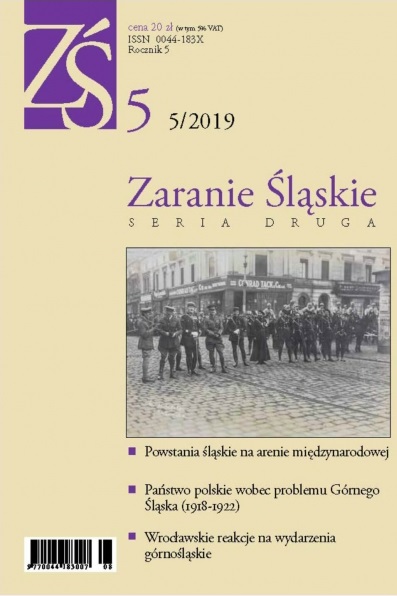Poland viewed from the French perspective in the years 1917-1921
Abstract
To French Diplomacy, it was crucial to form an alliance with a country on the
other side of Germany; therefore, after the end of the First World War Poland
and the Czechoslovak republic became part of a buffer zone. For this reason, the
Committee for Polish Matters working under Jules Cambon during the Paris Peace
Conference focused among others on the question of Upper Silesia. France was
well aware that the payment of war reparations by Germany may be problematic
after the loss of Silesia, producing annually 44 million tons of coal. That is why
Clemenceau supported the idea to hold a plebiscite in the region instead of
following the initially adopted plan to grant the area to Poland. Even though,
France sought to provide support to Poland in its confrontation with Germany. It
was quite evident once the Inter-Allied Managing and Plebiscite Committee was
formed in Silesia after the Treaty of Versailles came into effect in January 1920. The
body was led by a Frenchman, General Henri Le Rond, whose sympathies clearly
lay with Poland. The Silesian question had thus a stake in the postwar balance of
power in Europe.
Downloads
Published
Issue
Section
License

This work is licensed under a Creative Commons Attribution-NonCommercial-NoDerivatives 4.0 International License.
Since transitioning to a digital format, the journal has been operating under open access, meaning all content is freely available to users and institutions.
In issue 8 (2022), published articles are licensed under the Attribution 4.0 International (CC BY 4.0) license.
The full license text is available at: https://creativecommons.org/licenses/by/4.0/legalcode.
Since issue 9 (2023), published articles are licensed under the Attribution-NonCommercial-NoDerivatives 4.0 International (CC BY-NC-ND 4.0) license.
The full license text is available at: https://creativecommons.org/licenses/by-nc-nd/4.0/legalcode.pl.



